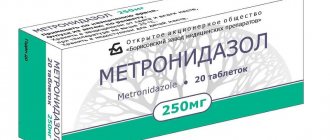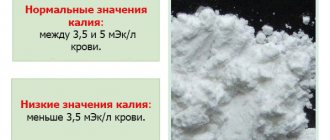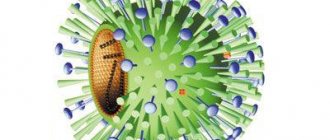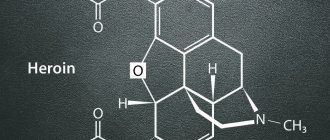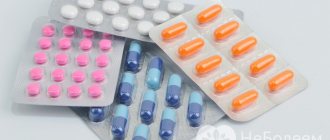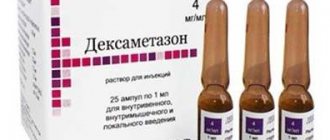On the one hand, Duphalac and an overdose are incompatible things, on the other hand, the simultaneous use of a large amount of medication is fraught with certain complications. For proper treatment, you need to follow the dosage.
Duphalac is a pharmacological drug based on the active ingredient lactulose, which can have a laxative effect for constipation or other bowel movements.
Operating principle
The drug greatly enhances intestinal motility, causes a hyperosmotic effect and is a highly effective laxative. Moreover, the product promotes the active absorption of phosphate and calcium salts, which leads to the excretion of ammonium ions.
The principle of action is based on the breakdown of lactulose by intestinal microflora into low molecular weight organic acidic substances, thereby significantly increasing the contents of the colon. Such processes activate intestinal motility and help restore natural bowel movements.
Based on the official instructions, the composition of Duphalax helps to increase lacto/bifidobacteria in the intestines, while simultaneously reducing the time of excretion of feces, while simultaneously suppressing the proliferation of pathogenic microorganisms such as salmonella or clostridia. And during a coma, it removes nitrogenous compounds from the intestines, preventing their negative impact on brain activity.
Description of the drug
This product contains lactose, which is the most harmless and mild laxative. But even a drug like Duphalac, if used uncontrolled, can cause the development of dangerous disorders in the functioning of the body.
Duphalac is sold at any pharmacy; it is available from pharmacies without a prescription. It is produced in the form of syrup for oral use. Typically, specialists prescribe this medicine for long-term use.
The active component of the drug improves intestinal motility and also helps to increase the percentage of fluid in the large intestine.
This occurs due to a phenomenon called osmosis. When using Duphalac, stool regulation and constipation are eliminated.
If you use the drug in the correct dosage, then no side effects will appear. Diarrhea will not occur, just the stool will be soft and its exit from the intestines will be easier. Using Duphalac does not tie a person to the toilet for the whole day.
The drug must be prescribed exclusively by a doctor. You cannot prescribe it on your own, as this is fraught with dangerous consequences for health. The duration, frequency of use, and dosage are also selected by the doctor depending on the individual characteristics of the patient’s body.
Duphalac: benefit or harm
The official medical description of the drug states that there will be no harm from taking Duphalac, but before purchasing it is better to consult with your doctor, due to some contraindications. The main thing is that the composition of the medicine is natural, and regular use does not lead to addiction. N is prescribed for the following diseases:
- The appearance of systematic or one-time constipation, Duphalac especially helps during pregnancy.
- Hemorrhoidal fissures or postoperative healing period of the anus.
- Various liver disorders caused by spontaneous growth of ammonia compounds.
- Dysbacteriosis in infants and children under 3 years of age.
- Enteric disease of various nature.
- Treatment of salmonellosis or any other helminthic infestation.
- Long-term syndrome of putrefactive dyspepsia due to food or alcohol poisoning.
How to treat constipation in children?
Constipation in children can be effectively treated with the help of this remedy. Usually the dosage is reduced, so for children you can buy Duphalac in sachets. Recommended amount of medication per day:
- For infants up to one year - no more than 5 milliliters.
- Children under 6 years old - up to 10 milliliters.
- Up to 14 years - no more than one sachet.
In newborns, constipation is treated with dosages of 1 ml. There is no need to sharply increase the amount of such medicine so as not to cause increased gas formation.
Usually, with proper use, childhood constipation goes away.
It is necessary to ensure that the daily dose of the medicine is not exceeded. As a rule, maintenance amounts of Duphalac are practically no different from the initial ones. The drug contains lactulose, and in the absence of contraindications, it can be used for a long time, even for children.
Duphalac and diabetes mellitus: features of administration
Considering the specifics of diabetes mellitus and the nature of the course of the disease, before taking it, you MUST consult with your doctor. The drug itself is harmless, but combining it with other anti-diabetic medications can cause poisoning. Therefore, Duphalac is prescribed for diabetes mellitus with great caution.
When is it prescribed?
The medication in question is prescribed in the following cases:
- If you have chronic constipation. In this case, the remedy will, in addition to loosening the stool, also regulate it, leading to normal functioning of the large intestine.
- This remedy is also used to loosen stools according to doctor’s indications - for hemorrhoids, in the presence of cracks in the anus, after operations on the rectum. When using the drug, the feces soften, and the affected intestinal mucosa can recover normally.
- For the treatment of hepatic encephalopathy in the acute stage. In this case, the drug eliminates intoxication and prevents the development of a coma.
Can Duphalac be given to newborns?
Before deciding whether to give Duphalac to newborns, you must consult with your pediatrician. Self-medication of breastfed children is unacceptable! The composition of the drug is absolutely safe for children, but it is still necessary to pass the necessary tests and be examined by a doctor.
In most cases, the medicine is prescribed to babies who are bottle-fed. It is due to lack of nutrients and lack of mother's milk that the baby develops constipation. After examination by a doctor, the child is prescribed a dosage of the drug, which will restore intestinal motility and normalize stool.
The composition of Duphalac helps suppress the development of pathogenic microorganisms and develops normal microflora. Despite the obvious advantages of taking the medicine, there are disadvantages, for example, overdose.
To avoid negative consequences, you must strictly adhere to the dosage and time of administration prescribed by your doctor. Duphalac during pregnancy or for infants does not lead to addiction and, moreover, does not interfere with the entry of nutrients into the child’s body.
In rare cases, allergic reactions to lactulose may occur. If a rash or other manifestations occur, you must immediately stop taking the syrup and consult a doctor.
How can you cleanse your intestines?
Duphalac for intestinal cleansing is used in a dosage of 1 ml per kilogram of weight. Usually, to do this, you need to drink it after meals; it is possible to divide the required daily dose into small doses.
However, some patients claim that this “soft” cleansing does not produce certain results. Therefore, there is a scheme for forced bowel cleansing. This method can also be used when the body is clogged (and it manifests itself with dizziness, nausea, colds, constipation and other phenomena).
Colon cleansing with Duphalac is carried out according to the following scheme:
- Purchase a 200 milliliter bottle of medicine. This amount will be enough for active cleansing.
- About a day in advance, you need to adjust your diet: eliminate meat, pasta, and vegetables. You need to eat pureed food, broths, drink juices and mineral water.
- At 13:00 prepare the cleaning solution. To prepare it, half a bottle of Duphalac must be diluted in one and a half liters of water. Drink this water over the next four hours.
- Usually within an hour the first urge to defecate begins. The person develops diarrhea that is not painful.
- At 7 pm, drink a second portion of the same solution within two hours.
- The procedure can be considered completely completed if the stool takes on the appearance of a clear liquid.
Please note that diarrhea completely goes away approximately 2 hours after the last dose of the medicine. To avoid trips to the toilet lasting the whole night, do not take the medicine late in the evening. Although the benefits of such cleansing are obvious, you still need to make sure that you drink enough liquid.
Duphalac: contraindications or adverse reactions
Taking the medicine is contraindicated for people with individual intolerance to lactulose or fructose. Do not take if there is obstruction of any part of the intestine. Also, use is contraindicated for anal bleeding of unknown etiology. Duphalac should be prescribed with caution during pregnancy, diabetes or lactation.
Side effects are similar to those after taking Duphalac in case of overdose, namely bloating, pain in the intestines and prolonged diarrhea.
special instructions
If there is no therapeutic effect when using Duphalac for several days, it is recommended to consult a doctor.
Lactulose should be administered with extreme caution to people with lactose intolerance. It should be taken into account that the drug being analyzed contains a certain amount of sugars (epilactose, galactose, lactose).
Duphalac for newborns should be used only in exceptional cases and under close medical supervision. During treatment with the drug, disturbances in the voiding reflex are possible.
Analogs
Structural analogues that can replace Duphalac are:
- Normaze. Available in the form of syrup, it has a hyperosmotic, laxative, hypoammonemic effect. The action of the drug improves the absorption of phosphate and calcium salts. Prescribed for dysbiosis, chronic constipation, salmonellosis, liver failure, hemorrhoids.
- Lactulose. Has an unexpressed laxative effect. Available in the form of syrup. Prescribed for digestive disorders caused by poisoning and putrefactive processes, acute gastrointestinal infections, liver diseases with neuropsychic disorders.
- Portalak. The laxative, stimulating peristalsis, hypoazotemic effect of the drug is useful for all types of constipation, including in pregnant women, enteritis, to soften stools with hemorrhoids and pain in the anus.
Take strictly according to your doctor's instructions
In addition to structural analogues, the gynecologist can prescribe other laxatives to pregnant women. For example:
- Vaseline oil – helps soften stool;
- Guttalax – stimulates peristalsis. The medication is not prescribed to women in the 1st trimester of pregnancy;
- Transilan, Mucofalk - increase the volume of intestinal contents. You will have to wait 5-7 days for the product to take effect;
- microenemas Norgalax, Normacol - for quick effect;
- herbal teas, glycerin suppositories.
Overdose symptoms
Poisoning begins to appear within 3-4 hours after ingestion of the drug. If you help a person in a timely manner and begin treatment, then there will be no dangerous consequences for the body.
Symptoms of poisoning are as follows:
- Pain and spasms occur in the intestines. This is how intestinal colic manifests itself, which occurs as a result of flatulence.
- The poisoned person begins to feel very sick and vomits. If the poisoning is mild, then these symptoms will be absent.
- There is severe diarrhea, against the background of which a large amount of fluid is removed from the body, and dehydration occurs.
An overdose threatens the loss of a large amount of fluid. Dehydration is a rather dangerous condition. Against this background, disorders such as the occurrence of blood clots, blood oxidation, and abnormal heart rhythm may appear.
Pharmacological group
| Category ICD-10 | Synonyms of diseases according to ICD-10 |
| A09 Diarrhea and gastroenteritis of presumably infectious origin (dysentery, bacterial diarrhea) | Bacterial diarrhea |
| Bacterial dysentery | |
| Bacterial infections of the gastrointestinal tract | |
| Bacterial gastroenteritis | |
| Diarrhea bacterial | |
| Diarrhea or dysentery of amoebic or mixed etiology | |
| Diarrhea of infectious origin | |
| Diarrhea during antibacterial therapy | |
| Traveler's diarrhea | |
| Travelers' diarrhea due to changes in diet and habitual diet | |
| Diarrhea due to antibiotic therapy | |
| Dysenteric bacteria carriage | |
| Dysenteric enteritis | |
| Dysentery | |
| Bacterial dysentery | |
| Dysentery mixed | |
| Gastrointestinal infection | |
| Gastrointestinal infections | |
| Infectious diarrhea | |
| Infectious disease of the gastrointestinal tract | |
| Gastrointestinal tract infection | |
| Infection of the biliary tract and gastrointestinal tract | |
| Gastrointestinal infection | |
| Summer diarrhea | |
| Nonspecific acute diarrhea of infectious nature | |
| Nonspecific chronic diarrhea of infectious nature | |
| Acute bacterial diarrhea | |
| Acute diarrhea due to food poisoning | |
| Acute dysentery | |
| Acute bacterial gastroenteritis | |
| Acute gastroenterocolitis | |
| Acute enterocolitis | |
| Subacute dysentery | |
| Chronic diarrhea | |
| Refractory diarrhea in patients with AIDS | |
| Staphylococcal enteritis in children | |
| Staphylococcal enterocolitis | |
| Toxic diarrhea | |
| Chronic dysentery | |
| Enteritis | |
| Infectious enteritis | |
| Enterocolitis | |
| K30 Dyspepsia | Fermentative dyspepsia |
| Hyperacid dyspepsia | |
| Putrid dyspepsia | |
| Dyspepsia | |
| Dyspepsia | |
| Dyspepsia of nervous origin | |
| Dyspepsia in pregnant women | |
| Fermentative dyspepsia | |
| Putrefactive dyspepsia | |
| Drug-induced dyspepsia | |
| Dyspepsia caused by diseases of the gastrointestinal tract | |
| Dyspepsia caused by impaired gastrointestinal motility | |
| Dyspepsia caused by unusual foods or overeating | |
| Dyspeptic symptoms during pregnancy | |
| Dyspeptic syndrome | |
| Dyspeptic disorder | |
| Gastric dyspepsia | |
| Delayed gastric emptying | |
| Slow digestion | |
| Idiopathic dyspepsia | |
| Acid dyspepsia | |
| Upper gastrointestinal motility disorder | |
| Indigestion | |
| Nervous dyspepsia | |
| Non-ulcer dyspepsia | |
| Feeling of heaviness in the stomach after eating | |
| Postprandial functional dyspepsia | |
| Fermentation processes in the intestines | |
| Stomach upsets | |
| Gastrointestinal disorders | |
| Digestive disorders | |
| Gastrointestinal disorders | |
| Stomach upset | |
| Digestive disorder | |
| Digestive disorders in infants | |
| Symptoms of dyspepsia | |
| Putrid dyspepsia syndrome | |
| Putrefactive dyspepsia syndrome in young children | |
| Digestive insufficiency syndrome | |
| Non-ulcer dyspepsia syndrome | |
| Toxic dyspepsia | |
| Functional dyspepsia | |
| Functional digestive disorders | |
| Chronic dyspepsia | |
| Chronic episodes of dyspepsia | |
| Essential dyspepsia | |
| K59.0 Constipation | Painful bowel movements |
| Age-related constipation | |
| Secondary constipation | |
| Dyschezia | |
| Constipation while breastfeeding | |
| Psychogenic constipation | |
| Constipation in adults | |
| Constipation in infants | |
| Chronic constipation | |
| Idiopathic constipation | |
| Idiopathic constipation | |
| Fecal blockage | |
| Colostasis | |
| Constipation | |
| Habitual constipation | |
| Rectal coprostasis | |
| Tendency to constipation | |
| Occasional constipation | |
| Decreased motor-evacuation function of the gastrointestinal tract | |
| Functional constipation | |
| Chronic constipation | |
| Chronic constipation | |
| K63.8.0* Dysbacteriosis | Bacterial dysbiosis |
| Viral dysbiosis | |
| Restoration of intestinal flora | |
| Deficiency of lactic acid and probiotic microorganisms | |
| Diarrhea during antibacterial therapy | |
| Dysbacteriosis | |
| Intestinal dysbiosis | |
| Intestinal dysbiosis | |
| Correction of intestinal microflora | |
| Disturbance of normal intestinal microflora | |
| Imbalance of intestinal microflora | |
| Disturbance of intestinal flora | |
| Disorders of the physiological flora of the large intestine | |
| Disorders of the physiological flora of the small intestine | |
| Normalization of intestinal microflora | |
| K72.9 Liver failure, unspecified | Latent hepatic encephalopathy |
| Acute liver failure | |
| Acute hepatic-renal failure | |
| Liver failure | |
| Hepatic precoma | |
| Z100* CLASS XXII Surgical practice | Abdominal surgery |
| Adenomectomy | |
| Amputation | |
| Angioplasty of coronary arteries | |
| Carotid angioplasty | |
| Antiseptic treatment of skin for wounds | |
| Antiseptic hand treatment | |
| Appendectomy | |
| Atherectomy | |
| Balloon coronary angioplasty | |
| Vaginal hysterectomy | |
| Corona bypass | |
| Interventions on the vagina and cervix | |
| Bladder interventions | |
| Intervention in the oral cavity | |
| Restorative and reconstructive operations | |
| Hand hygiene of medical personnel | |
| Gynecological surgery | |
| Gynecological interventions | |
| Gynecological surgeries | |
| Hypovolemic shock during surgery | |
| Disinfection of purulent wounds | |
| Disinfection of wound edges | |
| Diagnostic interventions | |
| Diagnostic procedures | |
| Diathermocoagulation of the cervix | |
| Long surgical operations | |
| Replacing fistula catheters | |
| Infection during orthopedic surgery | |
| Artificial heart valve | |
| Cystectomy | |
| Short-term outpatient surgery | |
| Short-term operations | |
| Short-term surgical procedures | |
| Cricothyroidotomy | |
| Blood loss during surgery | |
| Bleeding during surgery and in the postoperative period | |
| Culdocentesis | |
| Laser coagulation | |
| Laser coagulation | |
| Laser coagulation of the retina | |
| Laparoscopy | |
| Laparoscopy in gynecology | |
| CSF fistula | |
| Minor gynecological operations | |
| Minor surgical interventions | |
| Mastectomy and subsequent plastic surgery | |
| Mediastinotomy | |
| Microsurgical operations on the ear | |
| Mucogingival surgeries | |
| Stitching | |
| Minor surgeries | |
| Neurosurgical operation | |
| Immobilization of the eyeball in ophthalmic surgery | |
| Orchiectomy | |
| Complications after tooth extraction | |
| Pancreatectomy | |
| Pericardectomy | |
| Rehabilitation period after surgery | |
| The period of convalescence after surgical interventions | |
| Percutaneous transluminal coronary angioplasty | |
| Pleural thoracentesis | |
| Pneumonia postoperative and post-traumatic | |
| Preparing for surgical procedures | |
| Preparing for surgery | |
| Preparing the surgeon's hands before surgery | |
| Preparing the colon for surgery | |
| Postoperative aspiration pneumonia during neurosurgical and thoracic operations | |
| Postoperative nausea | |
| Postoperative bleeding | |
| Postoperative granuloma | |
| Postoperative shock | |
| Early postoperative period | |
| Myocardial revascularization | |
| Resection of the apex of the tooth root | |
| Gastric resection | |
| Bowel resection | |
| Resection of the uterus | |
| Liver resection | |
| Small bowel resection | |
| Resection of part of the stomach | |
| Reocclusion of the operated vessel | |
| Bonding tissue during surgery | |
| Removing stitches | |
| Condition after eye surgery | |
| Condition after surgery | |
| Condition after surgical interventions in the nasal cavity | |
| Condition after gastrectomy | |
| Condition after resection of the small intestine | |
| Condition after tonsillectomy | |
| Condition after removal of the duodenum | |
| Condition after phlebectomy | |
| Vascular surgery | |
| Splenectomy | |
| Sterilization of surgical instruments | |
| Sterilization of surgical instruments | |
| Sternotomy | |
| Dental operations | |
| Dental intervention on periodontal tissues | |
| Strumectomy | |
| Tonsillectomy | |
| Thoracic surgery | |
| Thoracic operations | |
| Total gastrectomy | |
| Transdermal intravascular coronary angioplasty | |
| Transurethral resection | |
| Turbinectomy | |
| Removal of a tooth | |
| Cataract removal | |
| Cyst removal | |
| Tonsil removal | |
| Removal of fibroids | |
| Removal of mobile baby teeth | |
| Removal of polyps | |
| Removing a broken tooth | |
| Removal of the uterine body | |
| Removing stitches | |
| Urethrotomy | |
| CSF duct fistula | |
| Frontoethmoidohaymorotomy | |
| Surgical infection | |
| Surgical treatment of chronic limb ulcers | |
| Surgery | |
| Surgery in the anal area | |
| Colon surgery | |
| Surgical practice | |
| Surgical procedure | |
| Surgical interventions | |
| Surgical interventions on the gastrointestinal tract | |
| Surgical interventions on the urinary tract | |
| Surgical interventions on the urinary system | |
| Surgical interventions on the genitourinary system | |
| Heart surgery | |
| Surgical procedures | |
| Surgical operations | |
| Vein surgery | |
| Surgical intervention | |
| Vascular surgery | |
| Surgical treatment of thrombosis | |
| Surgery | |
| Cholecystectomy | |
| Partial gastrectomy | |
| Transperitoneal hysterectomy | |
| Percutaneous transluminal coronary angioplasty | |
| Percutaneous transluminal angioplasty | |
| Coronary artery bypass surgery | |
| Tooth extirpation | |
| Extirpation of baby teeth | |
| Pulp extirpation | |
| Extracorporeal circulation | |
| Tooth extraction | |
| Tooth extraction | |
| Cataract extraction | |
| Electrocoagulation | |
| Endourological interventions | |
| Episiotomy | |
| Ethmoidotomy |
Instructions for use
The instructions for use indicate that the doses of Duphalac for the treatment of constipation and for softening stool for medical purposes are presented in the table.
| Patients | Initial dose | Maintenance dose |
| Adults | 15-45 ml | 10-25 ml |
| Children 7-14 years old | 15 ml | 10 ml |
| Children 3-6 years old | 5-10 ml | 5-10 ml |
| Children under 3 years old | 5 ml | 5 ml |
As a rule, the dose can be reduced after 2 days of administration depending on the patient's needs.
It is recommended to take the drug 1 time in the morning with meals. The clinical effect occurs after 1-2 days (this is characteristic of the action of lactulose). The dose or frequency of administration is increased if no improvement in the patient’s condition is observed within 2 days of taking the drug.
In the treatment of hepatic coma and precoma, the initial dose is 30-45 ml of syrup 3. Then they switch to an individually selected maintenance dose, at which a maximum of 2-3 soft stools are observed so that the pH of the stool is in the range of 5.0-5.5.
Causes of overdose
An overdose of this drug occurs as a result of taking an excessive dose. This usually happens in cases where people self-medicate or do not follow the recommendations prescribed by the doctor.
It happens that the patient feels that the medicine does not have the desired effect. Then he decides to increase the dosage, as a result of which an overdose develops.
When using Duphalac, the therapeutic effect may not appear at first. The drug has a gentle effect on intestinal function. Over time, the stool will normalize and become regular.
In addition, an overdose can occur if Duphalac is taken together with other drugs that have a laxative effect. They will simply enhance each other's effects. In this case, symptoms will develop very quickly.
Causes of overdose
An overdose of lactulose-based laxatives occurs as a result of taking a large dose of the drug . Most often this happens during self-medication for constipation or when you ignore the recommendations given by the doctor.
It happens that the patient feels that the drug does not work and is not effective. In this case, he independently decides to increase the dosage of the medicine, thereby causing an overdose.
Please note that when taking Duphalac, there may be no therapeutic effect at first . This is explained by the mild effect of the drug on intestinal function. Gradually, the stool will improve and become regular.
An overdose can also develop if Duphalac is combined with other laxatives. For example, when taking “Slabilen” in parallel, an overdose develops quickly, and dehydration quickly increases in a person.
Duphalac syrup has a sweet taste. A child, finding it at home, can drink a whole bottle. Keep all medications out of the reach of children.
Synonyms of nosological groups
| Category ICD-10 | Synonyms of diseases according to ICD-10 |
| A09 Diarrhea and gastroenteritis of presumably infectious origin (dysentery, bacterial diarrhea) | Bacterial diarrhea |
| Bacterial dysentery | |
| Bacterial infections of the gastrointestinal tract | |
| Bacterial gastroenteritis | |
| Diarrhea bacterial | |
| Diarrhea or dysentery of amoebic or mixed etiology | |
| Diarrhea of infectious origin | |
| Diarrhea during antibacterial therapy | |
| Traveler's diarrhea | |
| Travelers' diarrhea due to changes in diet and habitual diet | |
| Diarrhea due to antibiotic therapy | |
| Dysenteric bacteria carriage | |
| Dysenteric enteritis | |
| Dysentery | |
| Bacterial dysentery | |
| Dysentery mixed | |
| Gastrointestinal infection | |
| Gastrointestinal infections | |
| Infectious diarrhea | |
| Infectious disease of the gastrointestinal tract | |
| Gastrointestinal tract infection | |
| Infection of the biliary tract and gastrointestinal tract | |
| Gastrointestinal infection | |
| Summer diarrhea | |
| Nonspecific acute diarrhea of infectious nature | |
| Nonspecific chronic diarrhea of infectious nature | |
| Acute bacterial diarrhea | |
| Acute diarrhea due to food poisoning | |
| Acute dysentery | |
| Acute bacterial gastroenteritis | |
| Acute gastroenterocolitis | |
| Acute enterocolitis | |
| Subacute dysentery | |
| Chronic diarrhea | |
| Refractory diarrhea in patients with AIDS | |
| Staphylococcal enteritis in children | |
| Staphylococcal enterocolitis | |
| Toxic diarrhea | |
| Chronic dysentery | |
| Enteritis | |
| Infectious enteritis | |
| Enterocolitis | |
| K30 Dyspepsia | Fermentative dyspepsia |
| Hyperacid dyspepsia | |
| Putrid dyspepsia | |
| Dyspepsia | |
| Dyspepsia | |
| Dyspepsia of nervous origin | |
| Dyspepsia in pregnant women | |
| Fermentative dyspepsia | |
| Putrefactive dyspepsia | |
| Drug-induced dyspepsia | |
| Dyspepsia caused by diseases of the gastrointestinal tract | |
| Dyspepsia caused by impaired gastrointestinal motility | |
| Dyspepsia caused by unusual foods or overeating | |
| Dyspeptic symptoms during pregnancy | |
| Dyspeptic syndrome | |
| Dyspeptic disorder | |
| Gastric dyspepsia | |
| Delayed gastric emptying | |
| Slow digestion | |
| Idiopathic dyspepsia | |
| Acid dyspepsia | |
| Upper gastrointestinal motility disorder | |
| Indigestion | |
| Nervous dyspepsia | |
| Non-ulcer dyspepsia | |
| Feeling of heaviness in the stomach after eating | |
| Postprandial functional dyspepsia | |
| Fermentation processes in the intestines | |
| Stomach upsets | |
| Gastrointestinal disorders | |
| Digestive disorders | |
| Gastrointestinal disorders | |
| Stomach upset | |
| Digestive disorder | |
| Digestive disorders in infants | |
| Symptoms of dyspepsia | |
| Putrid dyspepsia syndrome | |
| Putrefactive dyspepsia syndrome in young children | |
| Digestive insufficiency syndrome | |
| Non-ulcer dyspepsia syndrome | |
| Toxic dyspepsia | |
| Functional dyspepsia | |
| Functional digestive disorders | |
| Chronic dyspepsia | |
| Chronic episodes of dyspepsia | |
| Essential dyspepsia | |
| K59.0 Constipation | Painful bowel movements |
| Age-related constipation | |
| Secondary constipation | |
| Dyschezia | |
| Constipation while breastfeeding | |
| Psychogenic constipation | |
| Constipation in adults | |
| Constipation in infants | |
| Chronic constipation | |
| Idiopathic constipation | |
| Idiopathic constipation | |
| Fecal blockage | |
| Colostasis | |
| Constipation | |
| Habitual constipation | |
| Rectal coprostasis | |
| Tendency to constipation | |
| Occasional constipation | |
| Decreased motor-evacuation function of the gastrointestinal tract | |
| Functional constipation | |
| Chronic constipation | |
| Chronic constipation | |
| K63.8.0* Dysbacteriosis | Bacterial dysbiosis |
| Viral dysbiosis | |
| Restoration of intestinal flora | |
| Deficiency of lactic acid and probiotic microorganisms | |
| Diarrhea during antibacterial therapy | |
| Dysbacteriosis | |
| Intestinal dysbiosis | |
| Intestinal dysbiosis | |
| Correction of intestinal microflora | |
| Disturbance of normal intestinal microflora | |
| Imbalance of intestinal microflora | |
| Disturbance of intestinal flora | |
| Disorders of the physiological flora of the large intestine | |
| Disorders of the physiological flora of the small intestine | |
| Normalization of intestinal microflora | |
| K72.9 Liver failure, unspecified | Latent hepatic encephalopathy |
| Acute liver failure | |
| Acute hepatic-renal failure | |
| Liver failure | |
| Hepatic precoma | |
| Z100* CLASS XXII Surgical practice | Abdominal surgery |
| Adenomectomy | |
| Amputation | |
| Angioplasty of coronary arteries | |
| Carotid angioplasty | |
| Antiseptic treatment of skin for wounds | |
| Antiseptic hand treatment | |
| Appendectomy | |
| Atherectomy | |
| Balloon coronary angioplasty | |
| Vaginal hysterectomy | |
| Corona bypass | |
| Interventions on the vagina and cervix | |
| Bladder interventions | |
| Intervention in the oral cavity | |
| Restorative and reconstructive operations | |
| Hand hygiene of medical personnel | |
| Gynecological surgery | |
| Gynecological interventions | |
| Gynecological surgeries | |
| Hypovolemic shock during surgery | |
| Disinfection of purulent wounds | |
| Disinfection of wound edges | |
| Diagnostic interventions | |
| Diagnostic procedures | |
| Diathermocoagulation of the cervix | |
| Long surgical operations | |
| Replacing fistula catheters | |
| Infection during orthopedic surgery | |
| Artificial heart valve | |
| Cystectomy | |
| Short-term outpatient surgery | |
| Short-term operations | |
| Short-term surgical procedures | |
| Cricothyroidotomy | |
| Blood loss during surgery | |
| Bleeding during surgery and in the postoperative period | |
| Culdocentesis | |
| Laser coagulation | |
| Laser coagulation | |
| Laser coagulation of the retina | |
| Laparoscopy | |
| Laparoscopy in gynecology | |
| CSF fistula | |
| Minor gynecological operations | |
| Minor surgical interventions | |
| Mastectomy and subsequent plastic surgery | |
| Mediastinotomy | |
| Microsurgical operations on the ear | |
| Mucogingival surgeries | |
| Stitching | |
| Minor surgeries | |
| Neurosurgical operation | |
| Immobilization of the eyeball in ophthalmic surgery | |
| Orchiectomy | |
| Complications after tooth extraction | |
| Pancreatectomy | |
| Pericardectomy | |
| Rehabilitation period after surgery | |
| The period of convalescence after surgical interventions | |
| Percutaneous transluminal coronary angioplasty | |
| Pleural thoracentesis | |
| Pneumonia postoperative and post-traumatic | |
| Preparing for surgical procedures | |
| Preparing for surgery | |
| Preparing the surgeon's hands before surgery | |
| Preparing the colon for surgery | |
| Postoperative aspiration pneumonia during neurosurgical and thoracic operations | |
| Postoperative nausea | |
| Postoperative bleeding | |
| Postoperative granuloma | |
| Postoperative shock | |
| Early postoperative period | |
| Myocardial revascularization | |
| Resection of the apex of the tooth root | |
| Gastric resection | |
| Bowel resection | |
| Resection of the uterus | |
| Liver resection | |
| Small bowel resection | |
| Resection of part of the stomach | |
| Reocclusion of the operated vessel | |
| Bonding tissue during surgery | |
| Removing stitches | |
| Condition after eye surgery | |
| Condition after surgery | |
| Condition after surgical interventions in the nasal cavity | |
| Condition after gastrectomy | |
| Condition after resection of the small intestine | |
| Condition after tonsillectomy | |
| Condition after removal of the duodenum | |
| Condition after phlebectomy | |
| Vascular surgery | |
| Splenectomy | |
| Sterilization of surgical instruments | |
| Sterilization of surgical instruments | |
| Sternotomy | |
| Dental operations | |
| Dental intervention on periodontal tissues | |
| Strumectomy | |
| Tonsillectomy | |
| Thoracic surgery | |
| Thoracic operations | |
| Total gastrectomy | |
| Transdermal intravascular coronary angioplasty | |
| Transurethral resection | |
| Turbinectomy | |
| Removal of a tooth | |
| Cataract removal | |
| Cyst removal | |
| Tonsil removal | |
| Removal of fibroids | |
| Removal of mobile baby teeth | |
| Removal of polyps | |
| Removing a broken tooth | |
| Removal of the uterine body | |
| Removing stitches | |
| Urethrotomy | |
| CSF duct fistula | |
| Frontoethmoidohaymorotomy | |
| Surgical infection | |
| Surgical treatment of chronic limb ulcers | |
| Surgery | |
| Surgery in the anal area | |
| Colon surgery | |
| Surgical practice | |
| Surgical procedure | |
| Surgical interventions | |
| Surgical interventions on the gastrointestinal tract | |
| Surgical interventions on the urinary tract | |
| Surgical interventions on the urinary system | |
| Surgical interventions on the genitourinary system | |
| Heart surgery | |
| Surgical procedures | |
| Surgical operations | |
| Vein surgery | |
| Surgical intervention | |
| Vascular surgery | |
| Surgical treatment of thrombosis | |
| Surgery | |
| Cholecystectomy | |
| Partial gastrectomy | |
| Transperitoneal hysterectomy | |
| Percutaneous transluminal coronary angioplasty | |
| Percutaneous transluminal angioplasty | |
| Coronary artery bypass surgery | |
| Tooth extirpation | |
| Extirpation of baby teeth | |
| Pulp extirpation | |
| Extracorporeal circulation | |
| Tooth extraction | |
| Tooth extraction | |
| Cataract extraction | |
| Electrocoagulation | |
| Endourological interventions | |
| Episiotomy | |
| Ethmoidotomy |
Treatment of overdose
What to do if a person has taken a large dose of Duphalac? First aid is to stop using that drug. Give the patient sorbents to drink, for example, activated carbon or smecta.
To prevent dehydration, drink as much fluid as possible. At least 2-3 liters per day. You can drink plain or mineral water, sweet tea.
If you see that the patient’s condition is not improving, he is vomiting and signs of dehydration appear, call an ambulance immediately. Further treatment will be carried out in a hospital setting.
Duphalac is a mild laxative whose action is aimed at softening stool and combating chronic constipation and decreased intestinal motility. You should take this drug after consulting a doctor . An overdose can develop if used incorrectly. It manifests itself with diarrhea, vomiting and abdominal pain. Severe diarrhea can lead to severe dehydration, a condition requiring hospital treatment.
Duphalac is a lactulose-based drug used for disturbances in the process of natural bowel movements. This medicine has a mild laxative effect and can be used at any age. An overdose of Duphalac is impossible, however, a significant excess of the dosage can cause a number of unpleasant side effects, such as diarrhea, flatulence, bloating, etc.
Treatment
What to do if an overdose of the drug was taken? The first step is to stop taking it. The patient should be given activated charcoal. You can also use another sorbent instead. To avoid severe dehydration, you need to drink a lot of water.
If the patient’s condition does not improve, and vomiting is added to all the symptoms, then a medical team should be called as soon as possible. All further therapy will be carried out in an inpatient setting.
Laxatives are widely used in medicine. With their help, constipation, intoxication and some diseases of the liver and digestive system are treated. Duphalac is a new generation drug that contains lactulose. This substance is considered the safest and mildest laxative . However, its independent and uncontrolled use can lead to severe disruptions in the functioning of the entire body. In this article, we review an overdose of Duphalac, its symptoms, and principles of treatment.
Release form
The dosage form of Duphalac is syrup. It is a clear liquid. The consistency is viscous, the color is light yellow. The syrup is packaged in opaque white plastic bottles. The volume of bottles can be 200, 500 and 1000 ml. Each container comes with a measuring cup.
In addition to bottles, the syrup is packaged in foil plastic bags. This is a convenient form of release for the road and travel: you just need to squeeze a ready-made portion of the medicine into your mouth. Volume of 1 sachet – 15 ml. They are packed in cardboard boxes of 10 pieces. Instructions are included in each package.
What does the drug contain?
Duphalac's composition is simple. It contains lactulose (66.7 ml per 100 ml of the finished solution), purified water (the entire remaining volume is 33.3 ml).
The drug does not contain any other additional substances.
Description of the drug
Duphalac is sold in pharmacies without a doctor's prescription . It is produced in the form of syrup for oral administration. As a rule, it is prescribed for long-term use.
How it works
Lactulose, the active ingredient in Duphalac, improves intestinal motility and also increases the amount of fluid in the large intestine by osmosis. Thanks to this action, the drug eliminates constipation and regulates bowel movements .
When used and dosed correctly, Duphalac does not cause diarrhea or diarrhea. It only makes the stool softer and simplifies its evacuation from the intestines. Taking the drug does not interfere with a comfortable and fulfilling life and does not tie a person to the restroom for the whole day.
Duphalac should be prescribed exclusively by the attending physician. Taking this drug on the advice of friends, neighbors, or anyone else who is not your doctor is dangerous. The duration, frequency of administration and dosage for this medicine are individual.
Indications
Indications for taking the drug are listed below:
- Chronic constipation. In this case, the drug not only loosens the stool, but also regulates it, improving the functionality of the large intestine .
- The need to loosen stools for medical reasons. This could be anal fissures, hemorrhoids, or previous surgery in the colon area. Duphalac makes stool softer, thereby helping to restore the irritated and damaged intestinal mucosa.
- Acute hepatic encephalopathy. In this case, the drug relieves intoxication and prevents the development of hepatic coma.
Contraindications
Despite the mildness of the action, not everyone can take Duphalac. The following are contraindications for its use:
- Complete or partial intestinal obstruction (regardless of the level of the pathological focus).
- The presence of perforation of the wall of the digestive tract or a high risk of its development.
- Allergic lactulose intolerance.
- Galactosemia.
- Lactose and fructose intolerance.
Analogs
You can find many Duphalac analogs for sale in pharmacies . Lactulose-based laxatives are available under the following trade names:
Undesirable effects
Clinical studies have shown excellent tolerability of the drug, which is why Duphalac can be used to treat infants and infants. But despite this, the medication manual identifies a number of possible side effects:
- Digestion: intense diarrhea, pain in the abdominal area, flatulence, colic, loss of appetite, vomiting and nausea;
- Allergic reactions: severe skin rashes, hives, itching.
A pronounced manifestation of undesirable effects suggests replacing the drug or reducing the dosage.
